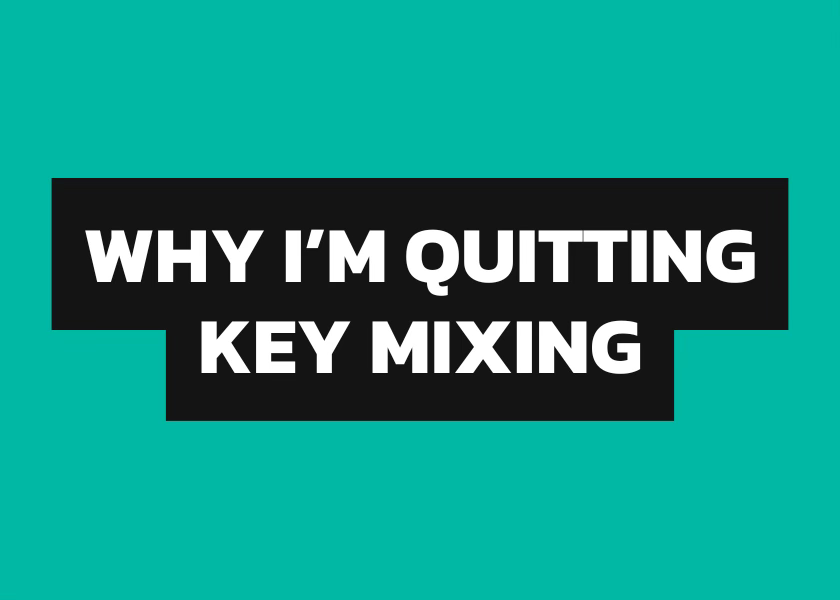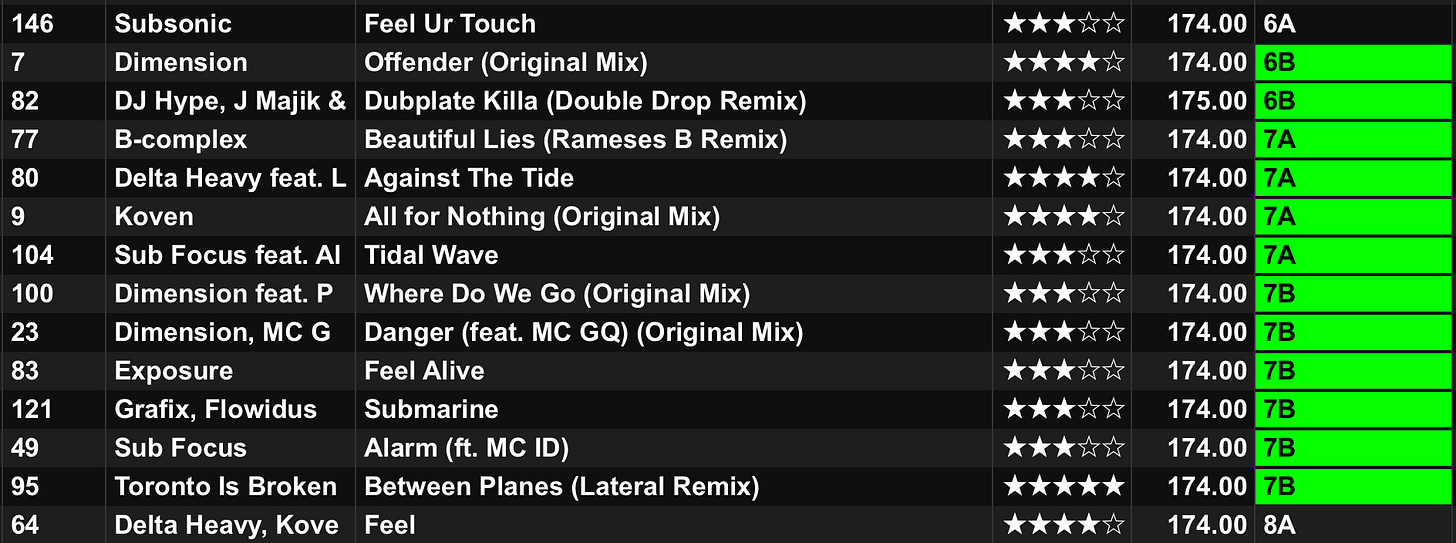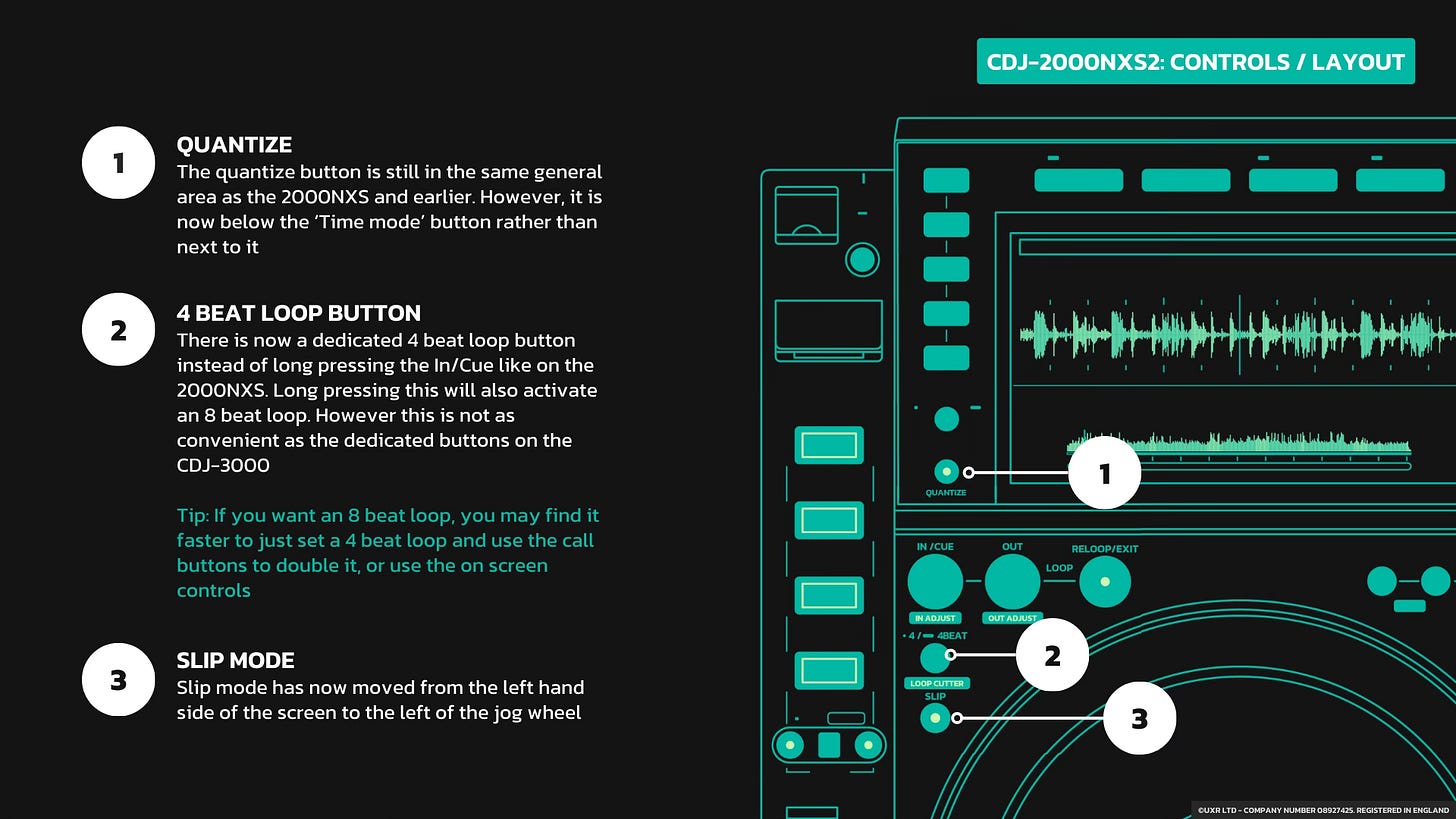Hi there Memory Cue Managers,
The other day I took a look at my music library and noticed a strange pattern.
The vast majority of tracks I’d played a lot were only in certain keys. Tracks outside of these keys had far fewer plays, or often none at all.
In recent years I’ve used key as one of my primary decision makers for choosing the next track to play.
There’s nothing more satisfying than double dropping a vocal from one track over the drop on another and having it gel together perfectly.
But is there something about this approach that was making my sets suck?
Spoiler: yes.
Where does the problem come from?
There’s a device in musical theory called The Circle of Fifths. It shows you what chords are related to each other harmonically.
The outer circle is the major chords, and the inner circle is the relative minor chords.
If the chords are next to each other on the chart they should (in theory) sound pretty good together. So 1B should sound good with 1A, 2B or 12B. It’ should also sound good with other 1B tracks.
The Camelot wheel is basically the Circle of Fifths but with the actual chord names replaced by numbers rather than chord names. This is to make it more accessible to those without a background in music.
All sounds pretty good so far.
So why might this seemingly helpful tool be negatively affecting your sets?
The canary in the coal mine
Let’s imagine I have a track loaded in my DJ software.
This absolute gem of a roller should do the trick. As you can see, it’s in key 7B, or F Major. So looking back at the wheel, it should sound good with 7B, 7A, 6B and 8B.
Rekordbox has a ‘Traffic Light’ system you can enable. It will automatically highlight tracks with compatible keys using the rules of the Camelot wheel.
This is great right? Well… not exactly..
DJ Booth Battle Pack
Save hours on gig prep
Before we continue, I just wanted to say a big thank you to everyone who bought the DJ Booth Battle Pack on launch - I really appreciate your support 🙏
I’ve already heard from a bunch of DJs who are using it in the wild to successfully prepare for their gigs which makes me super happy.
You can use the Battle Pack as a quick reference to feel confident on any CDJ setup. Subscribers get 30% off with code Y0NJM4MG.
The 3 traps I fell into
Relying too much on key mixing, and the traffic light feature caused me to spiral into a void of predictable transitions and overplaying tracks. And worse, I didn’t even realise it was happening.
Trap 1 - Eating the same ice cream
You’ll find with certain genres there tends to be a few keys that a lot of tracks are produced in. They just sound good and work for that particular style of music.
So, it’s common to find yourself playing a track in that key during your set.
If you mix primarily using key, that means you will end up following the same circle of fifths path over and over again.
It’s kind of like doing the same commute to your workplace every day. You always start from the same place, so you tend to take the same route.
If you are often playing in a certain key, then the same selection of tracks will be offered up as suggestions by the traffic light system.
Tracks in different keys (aka different routes) will never get on your radar. And you may only end up playing 50% of your library.
Trap 2 - The Monkey Brain
When you analyse your tracks in your DJ software, it’ll come up with a key. If you’re lucky it might even get it right.
But many tracks have percussive portions where there is very little harmonically going on. Usually intros, or outros. In essence, those parts don’t actually have a key.
That means you can blend almost anything over the top of them without having to worry about key clashes.
Also, some tracks actually change key mid-way. That means there could actually be sections of it that are in a compatible key, even if your DJ software thinks otherwise.
The thing is, I knew this. But the big green (or not green) light was stopping my monkey brain from experimenting.
I rarely tried combinations with tracks that didn’t have the green light, even if they would work perfectly well together.
Trap 3 - Sometimes clashes are cool
Harmony is like two colours that blend well. Dissonance is like two colours that clash.
Just like in art, dissonance can create tension, atmosphere, intensity and surprise. And it can do that in your sets too.
That means, sometimes it’s actually a good thing when sounds don’t quite give the audience’s ear the satisfying happy ending they are craving.
Music, just like flicking rubber bands at your younger sibling, is all about tension and release. So when you finally give that sweet sweet release to them, it can be a lot more powerful.
Of course sometimes dissonance will just sound plain bad. This means you’ll need to train your ear to understand when you should and shouldn’t use it.
How to stop being a key junkie
So what am I doing about all this?
I’m turning off Traffic Light. And I’ve created an intelligent playlist to pull up all my 0 play tracks. Every set I’m going to try and pull a few of these tracks in so I can use the full breadth of my library.
My hope is that i’ll discover new, and less obvious double drops and blends.
So is key mixing all bad? Not at all. It’s one of the best ways to create smooth and flowing sets. And works great with layering vocals or melodic sections of tracks.
But it’s a tool, not a rule - something that I’d lost sight of. Use it sparingly and I think the creativity in your sets will skyrocket.
Hit reply to this email and let me know if you’ve noticed yourself falling into this trap too.
IN OTHER NEWS

It’s Proms season here in the UK. If you aren’t from the UK, the Proms is a summer long classical music festival. Since I’ve been learning Piano I’ve started getting a better appreciation for Beethoven bangers. I’m looking forward to heading to the mosh pit for a few of those.








fully agree on the running in circle impression if you keep on the green lights path . For my part, I force myself while mixing not to jump on a green light track from time to time to change direction several times in a set.
Yep, totally agree. I've begun sorting playlists while I'm mixing by BPM. If a track is out of key, I stick to the 8 to 16 bars at the beginnings and ends where there is usually just percussion. If it is in key, then I might get cute and go for a 1 to 2 minute long blend. Helps to avoid missing a tune when I finally work my way over to that new release banger at 12A just to realize it's way slower than what I'm currently playing.